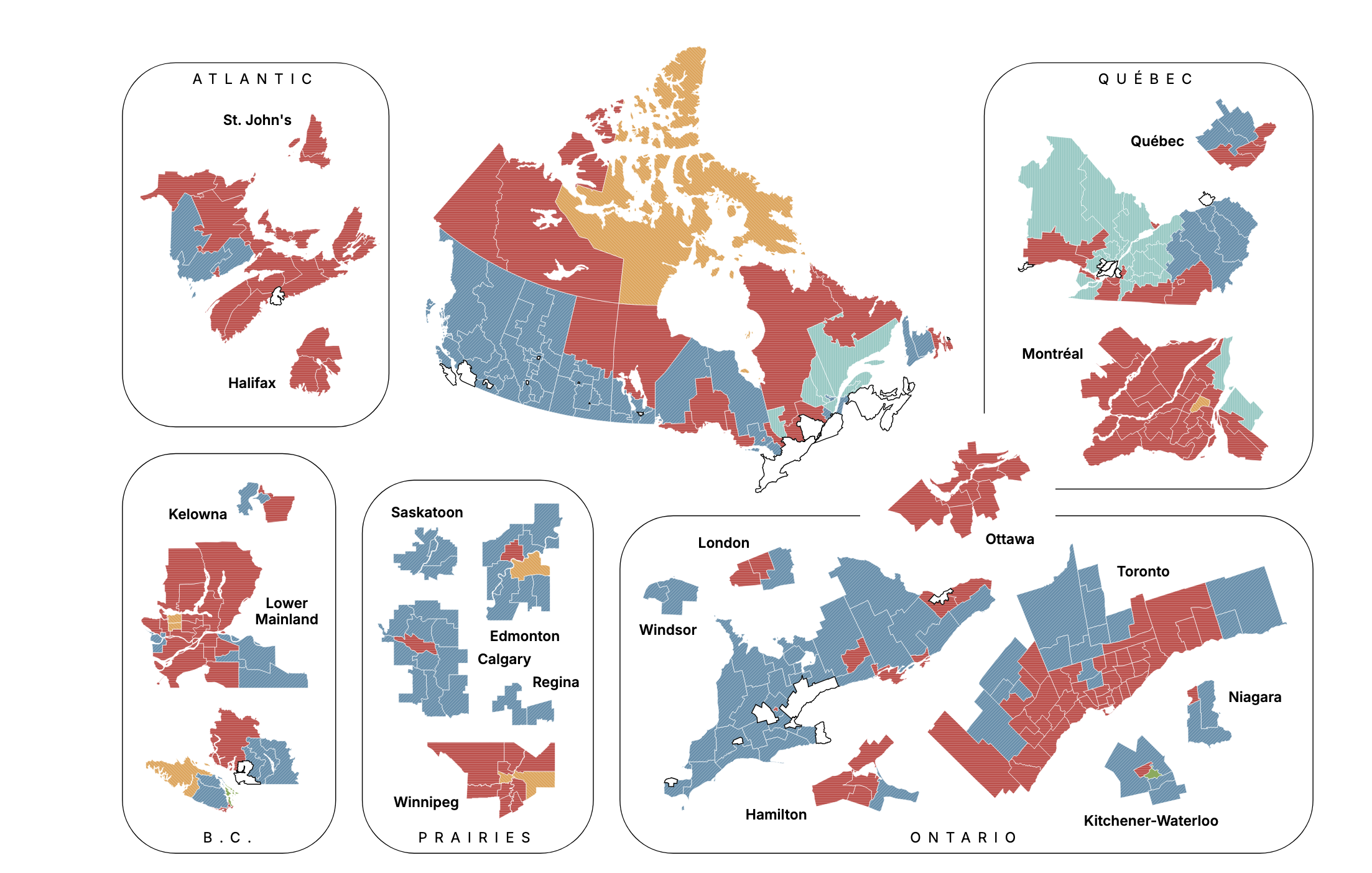Canadian Election Projection Map September 2025


David Chen
Data Visualization Specialist
David Chen is an expert in transforming complex geographic datasets into compelling visual narratives. He combines his background in computer science ...
Geographic Analysis
What This Map Shows
The "Canadian Election Projection - September 28, 2025" map provides a visual representation of the anticipated results for the upcoming federal election in Canada. Based on estimates, the map illustrates the distribution of seats among major political parties: the Liberals leading with 42.6% of the popular vote and securing 166 seats, followed closely by the Conservatives with 40.0% and 144 seats. Other parties, including the NDP, Bloc Québécois, and Greens, hold significantly smaller shares of both the popular vote and the resulting seats. This projection indicates a Liberal minority government, a critical outcome in Canada’s political landscape.
Deep Dive into Canada's Political Landscape
Understanding Canada’s political landscape requires more than just looking at the election results. Canada is a vast nation, characterized by diverse demographics, regional interests, and varying political ideologies. The major political parties reflect these complexities. The Liberal Party, known for its centrist policies, particularly appeals to urban populations, especially in Ontario and British Columbia. Their focus on social issues, climate change, and economic growth resonates with many voters in these regions.
Conversely, the Conservative Party garners strong support from rural areas and regions like Alberta and Saskatchewan, where traditional values and economic conservatism are prominent. Interestingly, the close percentage of the popular vote between the Liberals and Conservatives suggests a competitive political environment in the lead-up to the election.
Moreover, the New Democratic Party (NDP) and Bloc Québécois play crucial roles in this political equation. The NDP, with 7.9% of the vote, primarily attracts support from younger voters and those in urban centers who advocate for social justice and workers' rights. Meanwhile, the Bloc Québécois, holding 6.5% and 25 seats, remains a pivotal force in Quebec, focusing on provincial interests and sovereignty.
The Green Party's minimal share of 1.4% and only 2 seats highlights the challenges they face in gaining traction in a political landscape dominated by larger parties. However, their emphasis on environmental sustainability continues to keep climate issues at the forefront of national discourse.
Regional Analysis
Breaking down the election projections by region reveals significant variations in political leanings. In Ontario, the Liberals are expected to perform strongly, leveraging urban centers like Toronto and Ottawa, where their policies resonate with a diverse electorate. The Greater Toronto Area (GTA) is crucial, as it houses a significant portion of Canada's population and is often seen as a bellwether for national trends.
In contrast, Alberta is expected to favor the Conservatives heavily, reflecting the province's economic reliance on oil and gas and a more conservative social outlook. The rural-urban divide in Alberta is stark, with urban areas leaning more liberal, yet the overall provincial sentiment aligns with Conservative values.
Quebec presents an intriguing case with the Bloc Québécois maintaining influence. Their focus on local issues and national identity resonates deeply with Quebecois voters. The party's position will likely shape the dynamics of coalition-building, especially if no party achieves a clear majority.
British Columbia's political landscape is marked by a blend of liberal and green ideologies, particularly in urban areas like Vancouver. Interestingly, the coastal regions tend to prioritize environmental policies, which could influence the overall seat count for the Green Party, despite their small national presence.
Significance and Impact
The projected results of the Canadian election hold significant implications for the country's governance and policy direction. A Liberal minority government suggests a continuation of current policies, but it also means that compromise and coalition-building will be essential for passing legislation. This situation can lead to a dynamic political environment where issues like climate change, healthcare, and social justice may receive varying levels of attention depending on the responses from opposition parties.
Moreover, the close vote percentages suggest a highly polarized electorate, raising questions about voter engagement and the factors driving political preferences. As Canada faces pressing challenges such as economic recovery post-pandemic, climate change, and social equity, the outcomes of this election will shape the nation’s trajectory for years to come.
In summary, the "Canadian Election Projection - September 28, 2025" map not only visualizes anticipated electoral outcomes but also serves as a lens through which to examine the intricate political landscape of Canada. Understanding these dynamics is crucial for grasping the evolution of governance in this diverse nation, and it sets the stage for ongoing discussions about the future of Canadian democracy.
Visualization Details
- Published
- September 28, 2025
- Views
- 66
Comments
Loading comments...